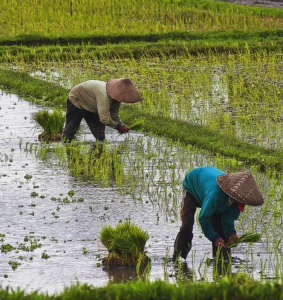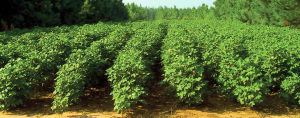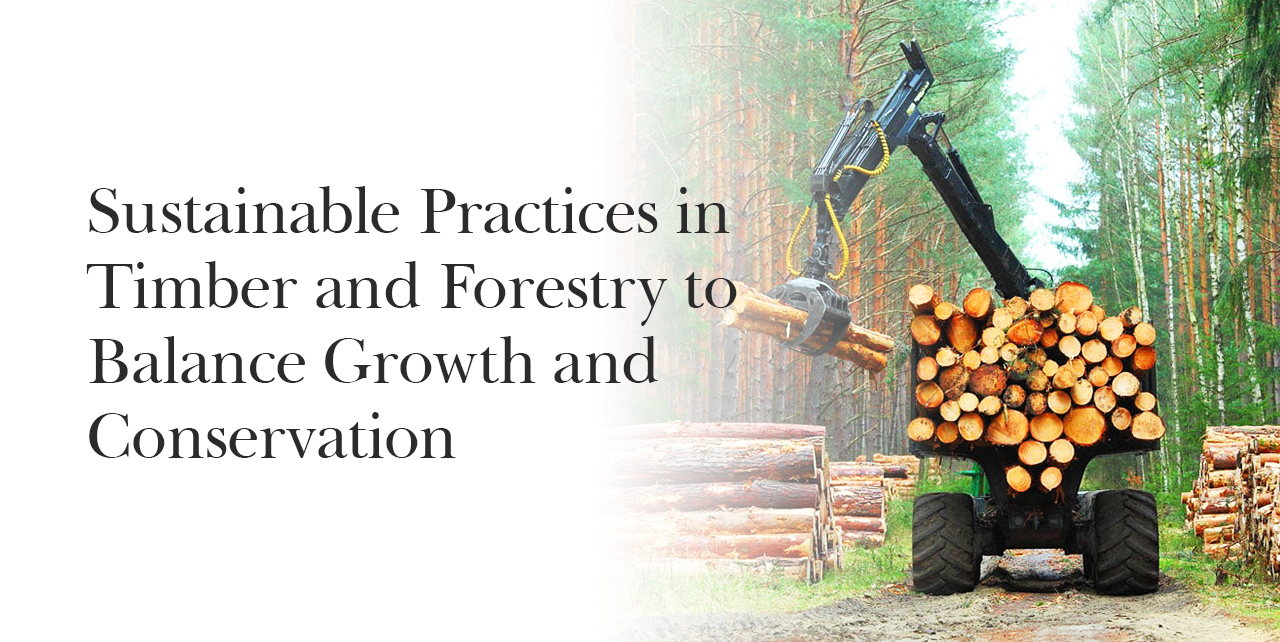The timber industry is a cornerstone of global economies, providing essential products such as construction materials, paper, and furniture. However, its significant environmental impact, particularly in deforestation and loss of biodiversity, has raised concerns worldwide. With growing awareness of environmental issues, sustainable forestry practices have emerged as a vital solution. These practices balance the demand for timber with the imperative to preserve our forest ecosystems.
The Importance of Sustainable Timber Practices
Forests play an essential role in the health of our planet. They regulate the climate, support diverse ecosystems, and provide resources for millions of people worldwide. While vital for economic growth, it has traditionally been associated with harmful practices like deforestation, leading to habitat loss, soil erosion, and a decline in biodiversity. Sustainable timber practices are designed to mitigate these effects by ensuring that forest resources are managed responsibly, preserving forests for future generations while continuing to meet the demand for timber products.
Sustainable forestry recognises the need for environmental conservation and economic development. By adopting responsible harvesting and reforestation techniques, the timber industry can continue to contribute to global economies while reducing its negative impact on the environment.
Key Sustainable Forestry Practices
Responsible Harvesting

Responsible harvesting refers to the methods used to extract timber without causing long-term harm to the forest ecosystem. This can be achieved through techniques such as selective logging, where only certain trees are harvested, allowing the rest of the forest to thrive. Another method is reducing the size of clear-cut areas and limiting the number of trees removed at a time. These practices prevent soil erosion, protect water quality, and ensure that forests can regenerate naturally.
Reforestation and Afforestation

Reforestation is the process of planting trees in areas where forests have been depleted, ensuring that timber extraction does not result in permanent deforestation. Afforestation, on the other hand, involves planting trees in areas that were not previously forested. Both practices are crucial for maintaining biodiversity, improving air quality, and mitigating the effects of climate change. By replenishing tree stocks, reforestation and afforestation contribute to carbon sequestration, helping to offset the carbon emissions caused by timber production.
Agroforestry

Agroforestry integrates the practice of growing trees alongside crops. This approach promotes land use that benefits both the environment and local communities. By combining forestry with agriculture, agroforestry helps improve soil fertility, reduce erosion, and provide additional income streams for farmers. It also increases biodiversity by creating mixed landscapes that support a variety of species. This sustainable land-use practice contributes to both food security and forest conservation.
Certification Standards and Their Role in Promoting Sustainability
To ensure that timber is harvested sustainably, several certification programs have been developed. One of the most recognized standards is the Forest Stewardship Council (FSC), which sets criteria for responsible forest management. FSC certification ensures that timber is sourced from forests that are managed to conserve biodiversity, uphold workers’ rights, and protect the rights of indigenous communities. Timber products carrying the FSC logo give consumers confidence that they are supporting sustainable forestry practices.
In addition to FSC, other certification programs, such as the Programme for the Endorsement of Forest Certification (PEFC) and the Sustainable Forestry Initiative (SFI), also play significant roles in promoting sustainability in the timber industry. These certifications set standards for sustainable forest management and track timber products from forest to final product, ensuring transparency and accountability in the supply chain.
The Benefits of Sustainable Timber and Forestry Practices
Environmental Benefits
Sustainable forestry practices help preserve forests and the ecosystems they support. By limiting deforestation, these practices protect biodiversity, ensuring that wildlife habitats remain intact. Responsible harvesting and reforestation efforts contribute to healthier soils, cleaner water, and better air quality. Additionally, sustainable timber practices play a crucial role in mitigating climate change by reducing carbon emissions and promoting carbon sequestration in forests.
Social and Economic Benefits
The timber industry provides jobs and supports local communities, particularly in rural areas where forests are a vital source of income. Sustainable forestry practices help ensure that these benefits are long-lasting. By focusing on responsible management and certification standards, the timber industry can provide fair wages, support local economies, and promote community engagement. Furthermore, sustainable timber practices create a more resilient industry that is better equipped to weather future environmental and economic challenges.
Supporting Sustainable Products
As consumer awareness of sustainability grows, there is increasing demand for products that are sourced responsibly. Timber products with sustainability certifications are appealing to environmentally conscious consumers, giving companies that adopt sustainable practices a competitive edge. This trend has the potential to drive broader change in the industry, pushing more companies to prioritize sustainability in their operations.
Challenges and Opportunities in Sustainable Timber Practices
Implementing sustainable timber practices faces challenges, including illegal logging and weak enforcement, particularly in regions with limited resources. However, there are opportunities to improve sustainability, such as using technology like satellite monitoring and drones to track forest health and ensure compliance. Global cooperation and rising consumer demand for certified sustainable products are also driving positive change.
By adopting responsible practices like reforestation and FSC certification, the timber industry can reduce environmental impact while contributing to economic and social benefits. With ongoing innovation and prioritization of sustainability, the future of the timber industry looks promising and resilient.


